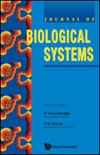MODELING THE EFFECTS OF PESTS AND PESTICIDE ON CROP YIELDS IN A MULTIPLE CROPPING SYSTEM
IF 1.3
4区 数学
Q3 BIOLOGY
引用次数: 0
Abstract
Pest infestation poses a significant threat to agricultural crop yields, and to control it, farmers spray chemical pesticides. The persistent use of these chemical agents not only leads to pesticide residues within crops but also exerts collateral damage on the beneficial pest population. In this research work, we formulate a nonlinear mathematical model to assess the impacts of pesticide on crop yields within a multiple cropping system. Model analysis illustrates that crop consumption rates destabilize, and the spraying rate of pesticide stabilizes the system. Furthermore, we determine conditions for the global stability of the coexisting equilibrium and conduct a global sensitivity analysis to identify model parameters that significantly influence pest population density. Our findings emphasize that, for effective pest population control and enhanced crop yields, farmers should choose either pesticides with a high pest abatement rate or those with a higher pesticide uptake rate. Considering the spraying rate of pesticide as time-dependent, we also suggest an optimal control strategy to minimize the pest population and associated costs. We provide analytical results backed by numerical simulations implemented through the non-standard finite difference scheme to support our findings.害虫和杀虫剂对多作物系统中作物产量的影响建模
虫害对农作物产量构成重大威胁,为了控制虫害,农民们喷洒化学杀虫剂。持续使用这些化学制剂不仅会导致农药在农作物中的残留,还会对有益害虫种群造成附带损害。在这项研究工作中,我们建立了一个非线性数学模型,以评估农药对多作物种植系统中作物产量的影响。模型分析表明,作物消耗率会破坏系统的稳定性,而农药喷洒率会使系统趋于稳定。此外,我们还确定了共存平衡的全球稳定性条件,并进行了全球敏感性分析,以确定对害虫种群密度有重大影响的模型参数。我们的研究结果强调,为有效控制害虫数量并提高作物产量,农民应选择害虫消减率高的农药或农药吸收率高的农药。考虑到农药喷洒率与时间有关,我们还提出了一种最佳控制策略,以最大限度地减少害虫数量和降低相关成本。我们提供了分析结果,并通过非标准有限差分方案进行了数值模拟,以支持我们的研究结果。
本文章由计算机程序翻译,如有差异,请以英文原文为准。
求助全文
约1分钟内获得全文
求助全文
来源期刊
CiteScore
2.80
自引率
12.50%
发文量
31
审稿时长
1 months
期刊介绍:
The Journal of Biological Systems is published quarterly. The goal of the Journal is to promote interdisciplinary approaches in Biology and in Medicine, and the study of biological situations with a variety of tools, including mathematical and general systems methods. The Journal solicits original research papers and survey articles in areas that include (but are not limited to):
Complex systems studies; isomorphies; nonlinear dynamics; entropy; mathematical tools and systems theories with applications in Biology and Medicine.
Interdisciplinary approaches in Biology and Medicine; transfer of methods from one discipline to another; integration of biological levels, from atomic to molecular, macromolecular, cellular, and organic levels; animal biology; plant biology.
Environmental studies; relationships between individuals, populations, communities and ecosystems; bioeconomics, management of renewable resources; hierarchy theory; integration of spatial and time scales.
Evolutionary biology; co-evolutions; genetics and evolution; branching processes and phyllotaxis.
Medical systems; physiology; cardiac modeling; computer models in Medicine; cancer research; epidemiology.
Numerical simulations and computations; numerical study and analysis of biological data.
Epistemology; history of science.
The journal will also publish book reviews.

 求助内容:
求助内容: 应助结果提醒方式:
应助结果提醒方式:


